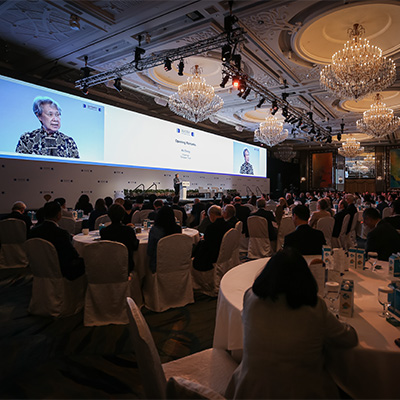China’s rise is not without problems
While China is growing in strength, it is unwilling and unprepared to replace the system that the US has put in place.
Even China’s Belt and Road Initiative, a massive project that aims to connect multiple continents through China-financed infrastructure, is unlikely to become a firm alternative to the US and the institutions it has set up, noted Mr Kausikan.
At the same time, China is also facing internal domestic pressures including having to deal with a resurgent Muslim minority and ensuring that the Chinese Communist Party maintains its primacy in Chinese society.
Against this backdrop, small countries like Singapore are squeezed in between. Choosing sides is not an option as both the US and China are important partners.
“It was a simple choice for us when it was the Soviet Union and the US (during the Cold War). But in the future, it’s not so simple,” he noted.
But even in today’s scenario, Singapore’s ability to stay nimble and navigate the politics of the superpowers remain its biggest strength in the international arena. This, in turn, has allowed it to stay a safe haven for companies looking for a stable investment destination.
Turning to the role of Association of Southeast Asian Nations (Asean), Mr Kausikan was more optimistic.
The bloc has maintained peace and stability in the region since it was formed in 1967. On the economic front, the region continues to have good fundamentals, including good growth and favourable demographics.
The region is also on the path to economic integration, but he warned that forming a common market is likely to take much more time.
Asean has set out the Asean Economic Community Blueprint 2025, where it hopes to create a deeply integrated and cohesive regional economy.
So far, it has achieved much to enable free trade and movement of people, goods and capital. For instance, nearly 96 per cent of tariff lines are at zero per cent.
The easy parts have been completed, but he stressed that the next and final lap is likely to be the most difficult one to finish.
“I don’t think the second stage of economic integration will fall apart, but it will move very slowly,” he said.
“If you want to have a common market and common production platform, you have to deal with the intrinsically difficult issues. You have to deal with labour issues, services and non-tariff barriers, which are all very difficult to handle.”
While Singapore faces steep challenges ahead, Mr Kausikan believes Singapore can continue to thrive, given its comparative advantage ”in the totality of our business ecosystem”.
At the same time, the key to Singapore’s survival remains the ability to learn how to deal with complexity and unpredictability, and therefore stay adaptable.
More importantly, Singaporeans must continue to maintain social cohesion and stay united in the face of such challenges, he added.
“We live in an age where the Singapore identity is a fragile one, where different types of identity are being asserted on us. That’s our biggest challenge. If we can solve that, I’m confident that the external things can be tackled,” he said.








